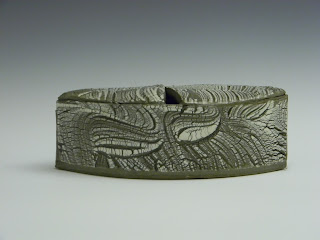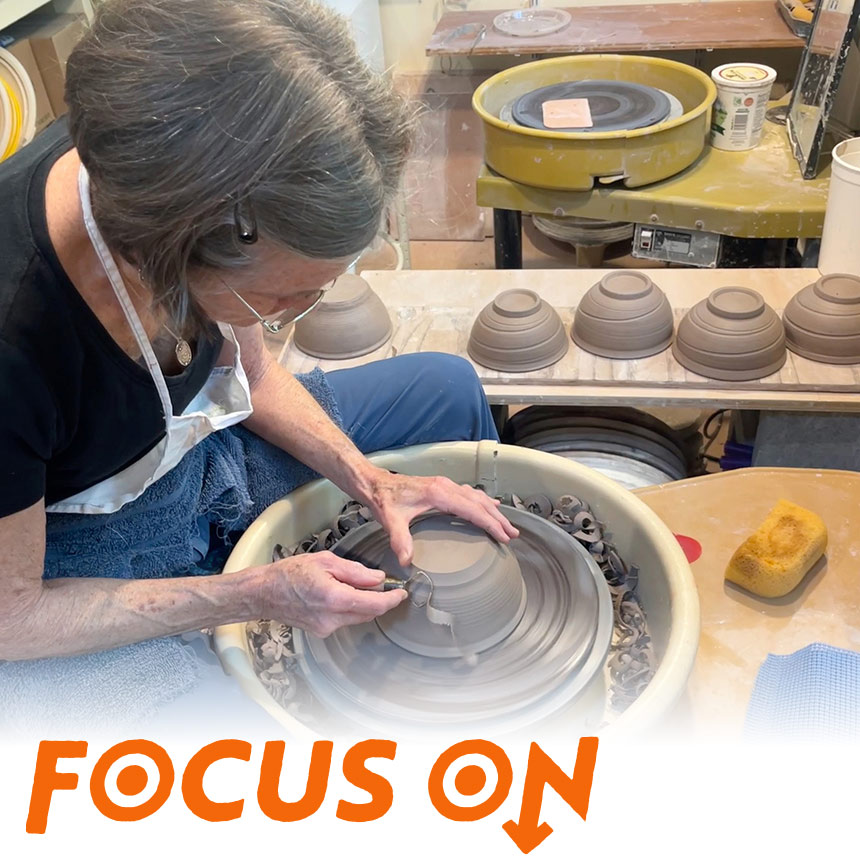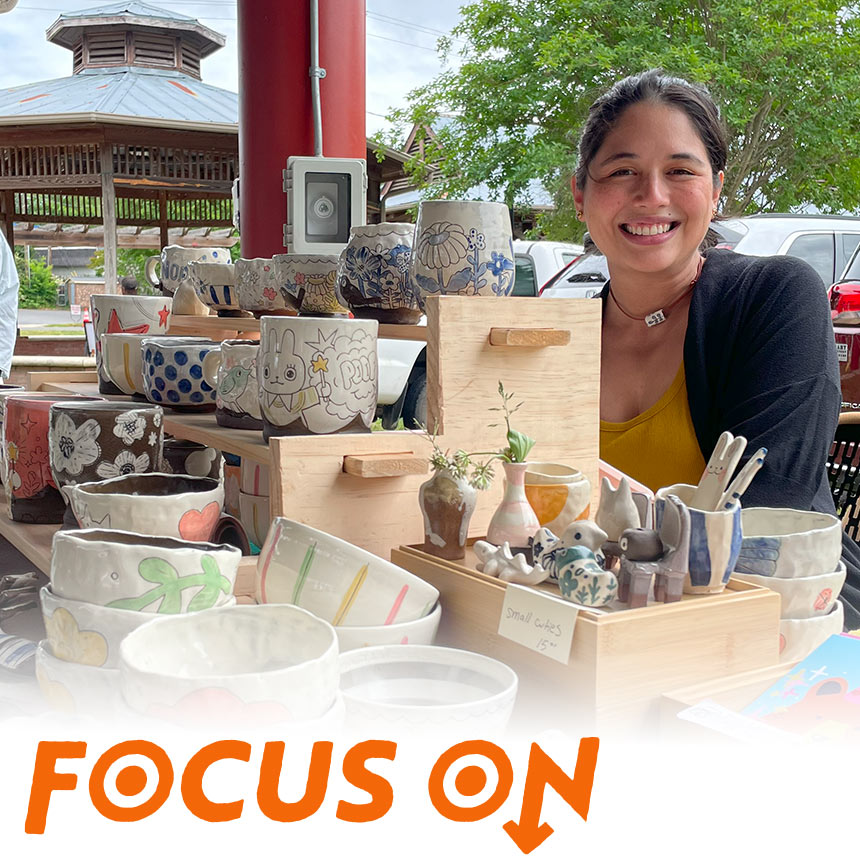Being self-taught means that nobody is warning you about all the things you shouldn’t do, and the trial-and-error path is full of wrong turns and blind alleys.

Clay is a meditation and a joy. Whether wedging clay, rolling it into slabs, or smoothing the texture left by my slab roller’s canvas, I feel connected to the earth.
A major influence on my work is the aesthetic of ukiyo-e woodblock prints from nineteenth century Japan. The circles in my work are inspired by the harvest moon found in many of these prints. My design placement echoes the asymmetry typical of ukiyo-e. Also, my childhood love of drawing and painting is reflected in small abstract expressionist slabs placed on a piece of pottery. Other influences include the geometry of art deco, which was introduced to me through my grandmother’s furniture, and mid-century modernism, which surrounds me in my own home.
The idea of containment is central to my work. My flat vertical vases, or flounders, create interplay between two and three dimensions. I create low horizontal pieces appropriate for Ikebana. Bottles both hide and suggest content.

My functional stoneware and my decorative Raku pieces are united through a similarity of form. The latter become therefore sculptural representations of functional work. I design templates to guide my shapes, much as one would cut a garment using a pattern. Sometimes, I use the same template for both, and other times, I enlarge the patterns for stoneware to offset the greater shrinkage that occurs in firing to hotter temperatures. After the slabs have stiffened a bit, I drape them over tubes in order to create volume. When they can stand without collapsing, I attach two or more of them together with slip made from the same clay. Recently, I have explored using harder slabs, which allows my pieces to take on a more architectural quality.
Working with clay fills me with peace. I hope that viewing my pottery likewise brings pleasure.
Find Emily’s name in our gallery listing at the OCAG website, so you can see more of her work as well as other artists in the Guild.




Comments (0)